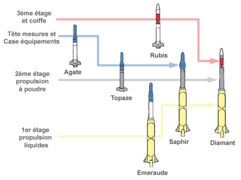
This article gives a concise timeline of rocket and missile technology.
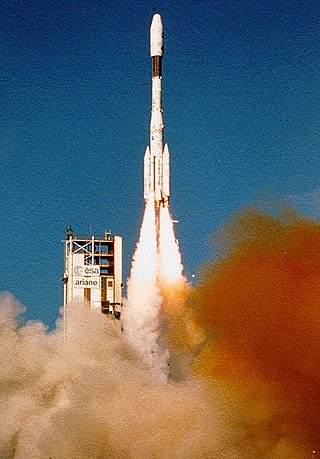
Ariane is a series of European civilian expendable launch vehicles for space launch use. The name comes from the French spelling of the mythological character Ariadne. France first proposed the Ariane project and it was officially agreed upon at the end of 1973 after discussions between France, Germany and the UK. The project was Western Europe's second attempt at developing its own launcher following the unsuccessful Europa project. The Ariane project was code-named L3S.
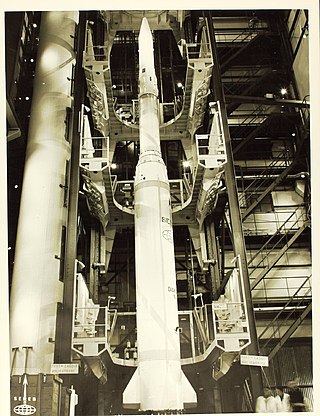
The Diamant rocket was the first exclusively French expendable launch system and at the same time the first satellite launcher not built by either the United States or USSR. As such, it has been referred to as being a key predecessor for all subsequent European launcher projects. The head of the project, Charley Attali, received the Legion of Honour in 1965 for the Diamant.
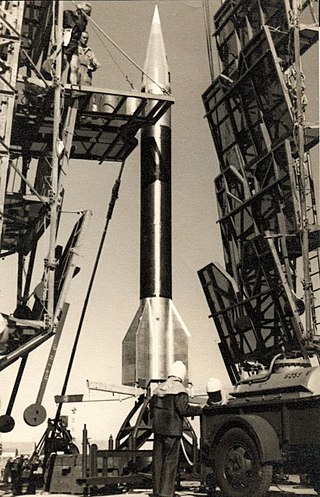
Véronique was a French liquid-fuelled sounding rocket of the 1950s. It was the first liquid-fuel research rocket in Western Europe.

Topaze is the designation of a French sounding rocket. The Topaze was developed by several French companies, notably Nord Aviation and Sud Aviation, and built by SEREB and was the first guidable French sounding rocket.

VE 231 Saphir was a French two stage sounding rocket.

The VE 210 Rubis was a French two-stage rocket.

The Rubis class is a class of nuclear-powered attack submarines operated by the French Navy. It originally comprised six boats, the first entering service in 1983 and the last in 1993. Two additional units originally planned were cancelled as a result of post-Cold War budget cuts. All submarines of the Rubis class have been based at Toulon and are part of the Escadrille de sous-marins nucléaires d'attaque. Smaller than contemporary designs of other major world navies, the Rubis class shares many of its system designs with the conventionally-powered Agosta class. In the late 1980s, the Rubis class was proposed to Canada in the context of their plan to acquire nuclear-powered submarines.

Astérix or A-1 is the first French satellite. It was launched on 26 November 1965 by a Diamant A rocket from the CIEES launch site at Hammaguir, Algeria. With Astérix, France became the sixth country to have an artificial satellite and the third country to launch a satellite on its own rocket. Its main purpose was to test the Diamant launcher, though it was also designed to study the ionosphere. Astérix continues to orbit Earth as of 2023 and is expected to remain in orbit for centuries.

Agate was the codename of the first French nuclear underground test. It was conducted by the Joint Special Weapons Command on 7 November 1961, at the Oasis Military Experiments Centre near In Ekker, French Algeria at the Tan Afella in the Hoggar Mountains, during the Algerian War.
The French space program includes both civil and military spaceflight activities. It is the third oldest national space program in the world, after the Soviet and American space programs, and the largest space program in Europe.
LandSpace Technology Corporation is a Chinese commercial space launch provider based in Beijing. It was founded in 2015 by Zhang Changwu.

The Centre Interarmées d'Essais d'Engins Spéciaux was France's first space launch and ballistic missile testing facility. Outside France, the facility is often referred to by the name of the nearest town, Hammaguir. It was established on 24 April 1947, by ministerial decree as the Special Weapons Test Center for use by the French Army. In 1948, it was turned over to the French Air Force, who renamed it CIEES. Its remote location in the middle of the Saharan Desert and its relative closeness to the Equator made it an attractive launch site for missiles and orbital rockets.

VE 121 Émeraude was a large French sounding rocket of the 1960s.

The French submarine Diamant was a Saphir-class submarine built for the French Navy in the mid-1930s. Laid down in July 1930, it was launched in May 1933 and commissioned in June 1934. Diamant was scuttled at Toulon on 27 November 1942 to prevent her capture by German forces, then refloated by Italian forces on 29 March 1943. On 22 June 1944, Diamant was bombed and sunk at Toulon by Allied aircraft.

The French submarine Nautilus was a Saphir-class submarine built for the French Navy in the mid-1930s. Laid down in August 1927, it was launched in March 1930 and commissioned in July 1931. Nautilus was disarmed at Bizerte, Tunisia and captured there on 8 December 1942 by Italian forces. On 31 January 1943, it was sunk at Bizerte during an Allied air raid. Nautilus was raised but not repaired and finally stricken on 12 August 1947.
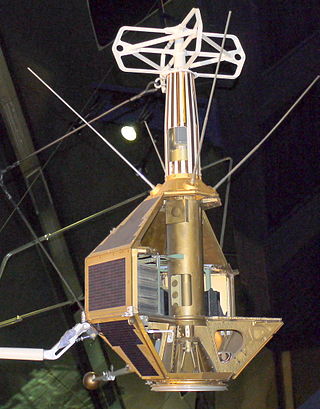
FR-1 was the second French satellite. Planned as the first French satellite, it was launched on 6 December 1965—ten days after the actual first French satellite, Astérix—by an American Scout X-4 rocket from the Western Range at Vandenberg Air Force Base. The scientific satellite studied the composition and structure of the ionosphere, plasmasphere, and magnetosphere by measuring the propagation of very low frequency (VLF) waves and the electron density of plasma in those portions of the Earth's atmosphere. FR-1's VLF receiver operated until 26 August 1968. FR-1 remains in orbit as of 2023.

BluShift Aerospace is an employee-owned American aerospace firm based in Brunswick, Maine. Targeting the growing smallsat and cubesat launch markets, bluShift is developing suborbital sounding rockets and small-lift orbital rockets which will be launched from a proposed new spaceport in Maine. The company has received primary funding from NASAs SBIR grant program, the National Science Foundations I-Corps grant program, the Maine Technology Institute, and the Maine Space Grant Consortium. The company has active operations at the former Brunswick Naval Air Station and Loring Air Force Base.
The Themis programme is an ongoing European Space Agency programme and carried by prime contractor, ArianeGroup, aiming to develop a prototype reusable rocket first stage and plans to conduct demonstration flights. The prototype rocket will also be called Themis.

